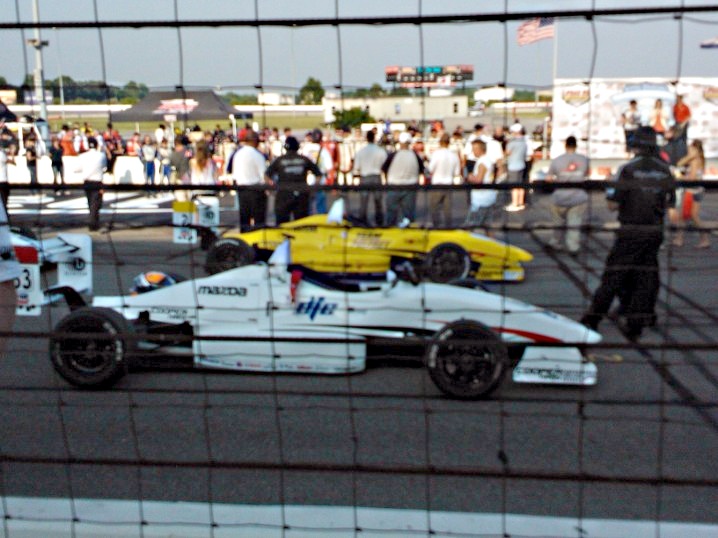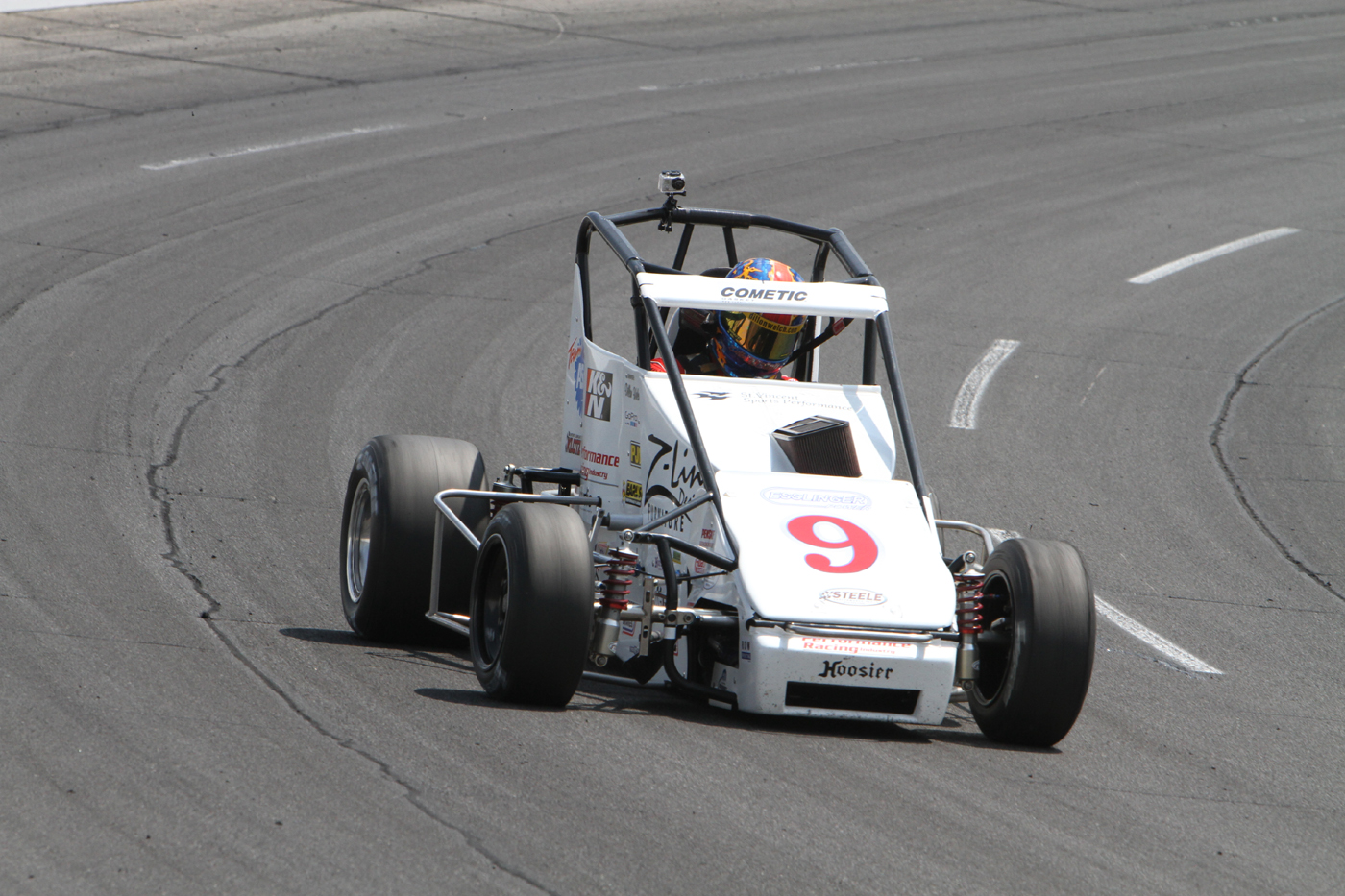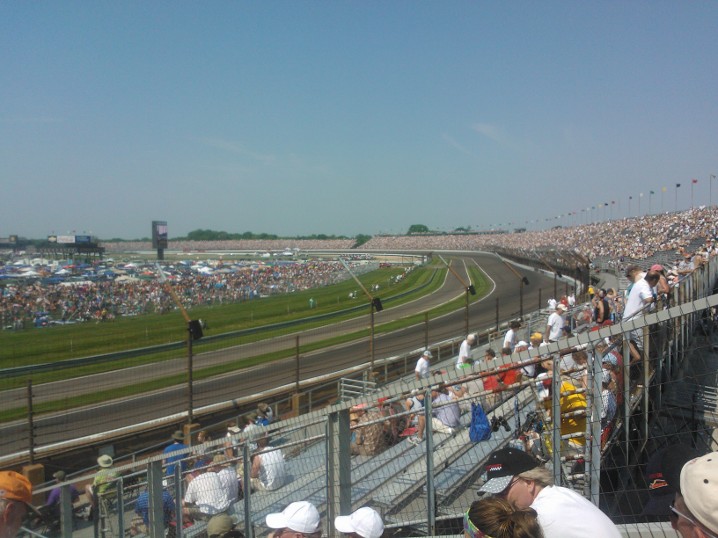JimJanelle.com
Indy 500 |
|
Indy 500 without TV...
My first memories of the Indy 500 were from the early 60s.
My father would listen to the radio broadcast of the race.
I remember how the reporters would report in sequence around the track as the cars made the pace laps.
Then in 1964, they started having the closed circuit TV broadcasts shown at a local theater.
I remember the camera showing the leaders going into turn 1 and suddenly switching to a huge plume of smoke in turn 4.
Despite the tragedy of that day, I remember how cool it was to actually see the race live for the first time.
Years later, I was working as an airline pilot and had to work on race day. I got to see the start of the race and the first 50 laps or so in the pilot lounge. During the rest of the race, I was on a flight from the NY area to Miami. Since I was the flight engineer, and not terribly busy, I scanned the AM radio frequencies to find the race. I would listen until that station was out of range, then scan for another one along the way. I was able to hop scotch radio stations all the way to Miami and listened to the end of the race as we started the descent to Miami. |
|
Indy 500 time trials in the 60s...
My father worked for the airlines as a mechanic in the 60s. With the free flying,
we were able to see first day time trials in 1968 and 1969.
I think the tickets were only $2 and there were around 200,000 people in the stands those days.
Seeing and hearing the turbine engine cars was something I will never forget!
|
|
My son's first visit to Indy...
My son was 12 the first time we went to Indy for time trials.
As we were waiting to cross the street to the main entrance,
he looked across and saw the main gate with the "Indianapolis Motor Speedway" above it.
He said, "Wow! I can't believe we are really here!".
|
|
Dave and Jim's perfect weekend at the 2012 Indy 500
Dave and I have gone to the Indy 500 twice before. Anyone who has spent any time in Indiana in May knows how unpredictable the weather is during the month.
In 2004, we flew out on Saturday morning amid weather predictions that were less than optimistic. But we were able to see the "Night Before the 500" races
Saturday at the short oval track in nearby Clermont, Indiana without any rain. The rain did come in that night though and the start of the 500 looked doubtful, but eventually
started an hour or so late. We saw 18 laps before the rains came back, along with thuderstorms and tornado warnings, stopping the race.
But we had a 6 pm flight to catch and could not wait for the
rain to stop and the track to be dried - a process that takes 1.5 to 2 hours. So we left for the airport to catch our flight. The race did finally restart
and ran to within a dozen or so laps of the end, but we did not get to see it.
In 2006, we decided to drive out there so we would not be tied to a flight schedule. This worked well, and of course the weather was bright and sunny that year! But the long drive out and back really was something we did not want to do again. So this year, I booked a flight home for late on Monday (the 500 is always held on Sunday) so that if there was a rain out we would be able to see the race on Monday and still catch our flight home. Well of course, there was hardly a cloud in the sky all weekend and record heat and humidity prevailed. But we got a fantastic weekend of great racing in 5 different classes of open-wheel cars. Friday night at the Indiana State Fairgrounds - Friday, May 25, 2012 USAC Silver Crown Race Highlights 1 mile dirt oval: average lap speeds over 100 mph. Saturday night at Indianapolis Raceway Park - Saturday, May 26, 2012 USAC Midget Race Highlights 5/8 mile paved oval: average lap speeds over 115 mph. The 500 is the reason to be in Indy on Memorial Day weekend, but the show they put on at IRP for the night before the 500 event is well worth the trip as well. There were 3 open-wheel classes racing this night: F2000 (Formula 2000), Star Mazda, and USAC Midgets. The first 2 are cars that are very similar to Indy cars, but a bit smaller and a lot less horsepower. 
The USAC Midgets are small, powerful, agile cars that really became popular after World War 2. IRP is the perfect track for midgets because of the wide and shallow banked turns. This allows the cars to run almost anywhere on the track and offers many opportunities for passing. All this, and the smell of the methanol fuel they burn really is a unique experience. This year's show featured great racing in all 3 classes. But the midget feature race was the best with a pass on the last turn for the win! 
Indianapolis 500 - Sunday May 27, 2012 Indy 500 Race Highlights 2.5 mile oval: average speed 215-220 mph On race morning, we left the hotel around 9 am to head to the track. The past 2 times we went to the race, we had tickets in the first turn of the track. We had our favorite parking place figured out. But this year we had seats in turn 3, so we would have to park on the opposite side of the track. We got to within 1.5 miles of the track when the traffic stopped dead. We sat in a line of cars that moved about a quarter mile in 30 minutes. We finally decided to park in a shopping center parking lot we had been next to for 20 minutes and walk the rest of the way in to the track. We joined the hundreds of others doing the same thing. It took about 30 minutes to get to the gates of the track and another 10 minutes to get inside the gates. Finally we could find some shade and drink some water to cool off. About a half hour before the race started, we found our way to our seats. Here is the view from our seats. 
I am not usually one for all the hoopla that is part of the build up to big events, but there is something timeless about the Indy 500 ceremonies that really grab me. Maybe it is because the ceremonies have not changed much in all the years I have followed the race - it is all about Memorial Day and it is difficult to not feel a lot of emotion. Then comes the tradional singing of "Back Home Again in Indiana" by Jim Nabors, which if followed by the call for "ladies and gentlemem, start your engines". This is where everyone's pulse begins to quicken as all the engines come to life. The cars make 3 pace laps to warm up, then line up in 11 rows of 3 for the start. Pace lap - turn 3 Green flag! Here is our video of the first time by us after the green flag. Believe me - the video does not do this justice! Lap 2 - turn 3 What a race! Record temperature, record number of lead changes, no one got hurt, and we survived the 90 degrees plus sun and 250,000+ people! Here is ABC's TV coverage of the last few laps. |